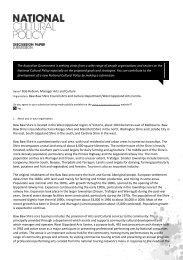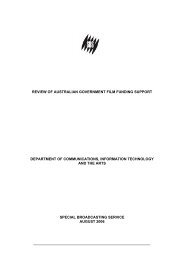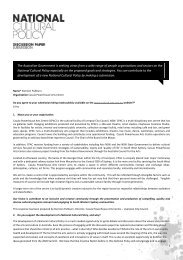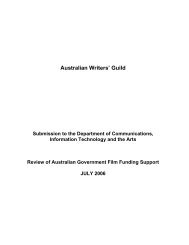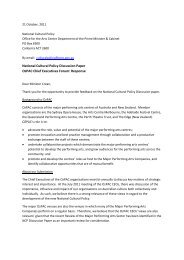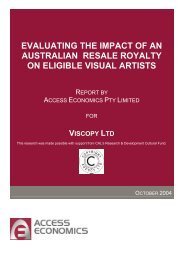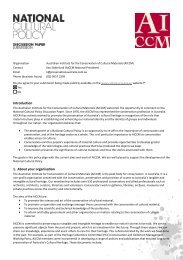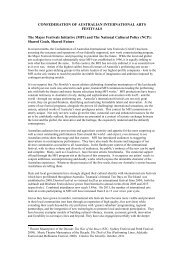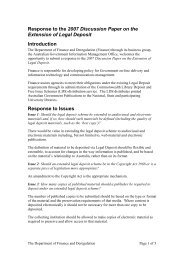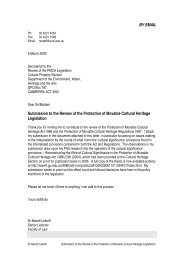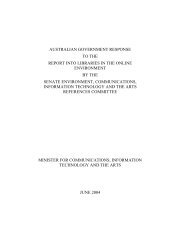National Association for the Visual Arts
National Association for the Visual Arts
National Association for the Visual Arts
Create successful ePaper yourself
Turn your PDF publications into a flip-book with our unique Google optimized e-Paper software.
one of several <strong>for</strong>ms of support and acknowledgement, which toge<strong>the</strong>rcan give artists <strong>the</strong> means and incentive to conduct <strong>the</strong>ir practice.The Throsby and Hollister report 3 provides <strong>the</strong> extremely worryingevidence that over at least <strong>the</strong> fifteen year period of <strong>the</strong> surveys, visualartists’ incomes have been steadily dropping, and comparatively morethan <strong>the</strong> average wage earner. While this was also true <strong>for</strong> o<strong>the</strong>r creatorsuntil <strong>the</strong> early 90s, <strong>the</strong> incomes of professionals in o<strong>the</strong>r art<strong>for</strong>m areasbegan to rise again. Sadly this is not <strong>the</strong> case <strong>for</strong> visual and craft artists.In 2000/1, <strong>the</strong> most recent period surveyed, 22% of visual artists and 19%of craft practitioners earned less than $10,000 income from all sources.The median income of visual artist was $22,900 with $3,100 coming from<strong>the</strong>ir art practice, and $22,600 <strong>for</strong> craft practitioners with $8,200 comingfrom <strong>the</strong>ir craft practice. With median expenditure on visual arts practiceof $4,400 and $7,000 <strong>for</strong> craft, many creators are making very smallprofits, if any. When artists’ incomes are compared with those of o<strong>the</strong>rfull time employed professional people earning a median income of$48,900, <strong>the</strong> difference becomes starkly clear. Artists are earning lessthan half <strong>the</strong> income of <strong>the</strong> average professional.Alongside this, <strong>the</strong> auction market has significantly increased its profitsover <strong>the</strong> last 10 years (as detailed in <strong>the</strong> DCITA discussion paper)indicating that <strong>the</strong> improving art economy can well af<strong>for</strong>d to make acontribution to artists’ financial viability.3. Who do you consider should be <strong>the</strong> principal targets of aresale royalty arrangement and why?The principal targets of <strong>the</strong> resale royalty arrangement would be allAustralian artists whose artistic works are resold and <strong>the</strong>ir heirs. Just asany one else’s heirs have <strong>the</strong> right to benefit from <strong>the</strong>ir benefactors’ability to build <strong>the</strong>ir estates, so too should <strong>the</strong> heirs of artists who havemanaged to achieve financial success.NAVA is of <strong>the</strong> view that <strong>the</strong> royalty right should not be based on needalone, but is a right similar to moral rights and should be viewed as anentitlement <strong>for</strong> all visual artists and craft practitioners regardless of <strong>the</strong>irchosen medium of expression. Some suggest that <strong>the</strong> right should onlyapply to Aboriginal artists, however this is not a view shared by NAVA,3 ibid




